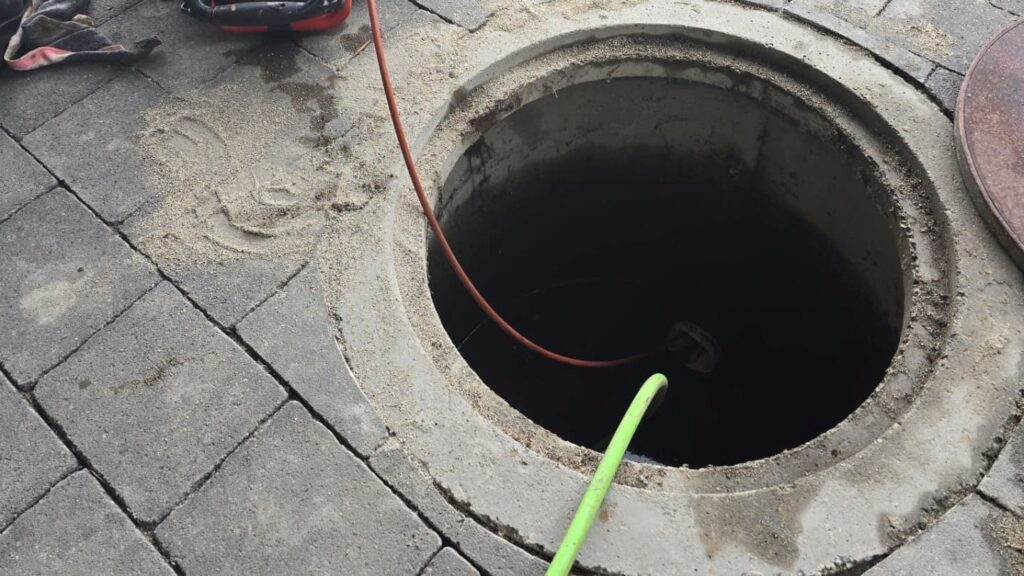Gas Leak: Why It Happens and What to Do
Gas leaks are a serious safety hazard that can lead to devastating consequences if not addressed promptly. From explosions and fires to health complications…

Hydro jetting is a powerful method used to clean slow-moving drains and clogged sewage lines. This technique employs a specialized machine that effectively blasts water at extremely high pressures, up to 4,000 psi, to remove stubborn blockages. Unlike traditional methods that may only clear the center of a clog, hydro jetting cleans the entire pipe, ensuring a thorough job.
Before starting the hydro jetting process, expert plumbers often use a plumbing snake to break up larger clogs. They may also perform a video camera inspection to identify the exact location and cause of the blockage. This combination of techniques helps ensure that hydro jetting is both effective and safe for your plumbing system.
In Canada, where the plumbing infrastructure can vary widely from urban to rural areas, understanding hydro jetting is essential for homeowners. This method clears clogs and helps maintain the longevity of your plumbing system by preventing future issues.
Hydro jetting is the process of using high-pressure water jets to clear clogs and debris buildup from the walls of pipes throughout your plumbing system. This intense cleaning method is particularly effective in removing grease, food particles, mineral scales, and even tree roots that might be blocking your pipes.
When a plumber uses hydro jetting, they can quickly and easily break up clogs made from various materials, including congealed baby wipes or food residues. Professional plumbers often employ this technique to tackle slow-moving or completely clogged sewage lines.
However, it’s essential to note that hydro jetting may not be suitable for all situations. Older pipes or those that are already broken or collapsed may not withstand the intense pressure. That’s why a plumber must evaluate your plumbing system before deciding if hydro jetting is the best solution.
During the hydro jetting process, a plumber uses specialized equipment known as a jetter. This machine consists of a water tank, hose, nozzle, and device that pressurizes the water. Depending on the drain’s size or the clog’s nature, the nozzle can vary in shape and size. For instance, a chisel-type nozzle is effective for cutting through hard blockages like roots or ice.
To initiate the process, the plumber inserts the nozzle into the sewer pipe, typically through a cleanout opening. The jetter then sends a high-pressure blast of water down the line, with pressures reaching up to 4,000 psi. This powerful stream of water travels rapidly, effectively clearing clogs and flushing out built-up debris from the pipe walls.
One of the benefits of hydro jetting is that it not only clears the blockage but also cleans the pipes, helping to prevent future clogs. The force of the water scours the entire interior surface of the pipes, leaving them much cleaner than traditional methods might achieve.
Hydro jetting offers numerous advantages for homeowners and businesses alike. Here are some key benefits:
Hydro jetting is versatile and can be used in various ways to maintain plumbing systems:
The differences are clear when comparing hydro jetting to traditional drain cleaning methods like snaking. Hydro jetting provides a more comprehensive cleaning by aggressively flushing the system with high-pressure water. In contrast, traditional snaking only punctures clogs and may leave stubborn debris on the pipe walls.
While snaking is often preferred for older homes with weaker pipes due to its gentler approach, but it may only effectively clear some clogs. Hydro jetting, on the other hand, is better suited for tough blockages but requires a thorough assessment of the plumbing system beforehand.
Understanding these differences can help homeowners decide the best cleaning method for their plumbing issues.
Hydro jetting is a reliable and effective method for drain cleaning that licensed professionals should perform. Skilled plumbers utilize pressurized water jets to remove stubborn clogs without risking damage to your pipes. This method is efficient and cost-effective, saving you time and money by addressing clogs before they escalate into more serious issues.
In British Columbia, TaskPro offers local emergency plumbing and hydro jetting services for homeowners in Surrey, Vancouver, Langley, and surrounding areas. Our team is dedicated to providing swift and effective solutions for clogged drains, giving you peace of mind. Alongside hydro jetting, we provide various other plumbing services, including sink installation, sump pump replacement, water heater repair, and shower fixture installation.
Don’t hesitate to call us at 604-245-5524 or reach out through our contact form for assistance with your plumbing needs.
There are several signs that indicate your plumbing system may benefit from hydro jetting:
If you need clarification on whether hydro jetting is right for you, contacting TaskPro for an evaluation is a wise choice.
Yes, hydro jetting can effectively clear tree roots that have penetrated your pipes. Plumbers usually perform a video inspection before starting the process to assess the damage caused by the roots. If the damage is minor, hydro jetting can be a viable solution.
However, if the roots have caused extensive damage, a tree maintenance company may need to remove them to avoid further issues.
While hydro jetting is highly effective, it can potentially damage older pipes. The high-pressure water can be abrasive to weakened or aging pipes, leading to cracks or breaks. It’s advisable to have a professional evaluate the condition of your pipes before proceeding with hydro jetting to ensure it’s a safe option.
Share this Guide
Gas leaks are a serious safety hazard that can lead to devastating consequences if not addressed promptly. From explosions and fires to health complications…
Septic tanks are a vital component of wastewater management systems, particularly in areas where municipal sewer systems are unavailable. These underground structures treat and…
Choosing the right toilet for your home is more than a simple decision; it’s an investment in comfort, efficiency, and functionality. The type of…